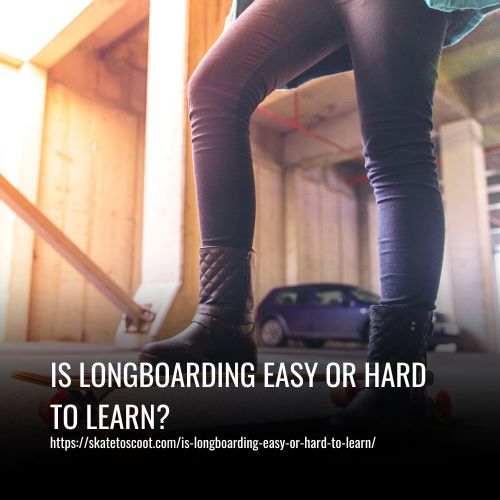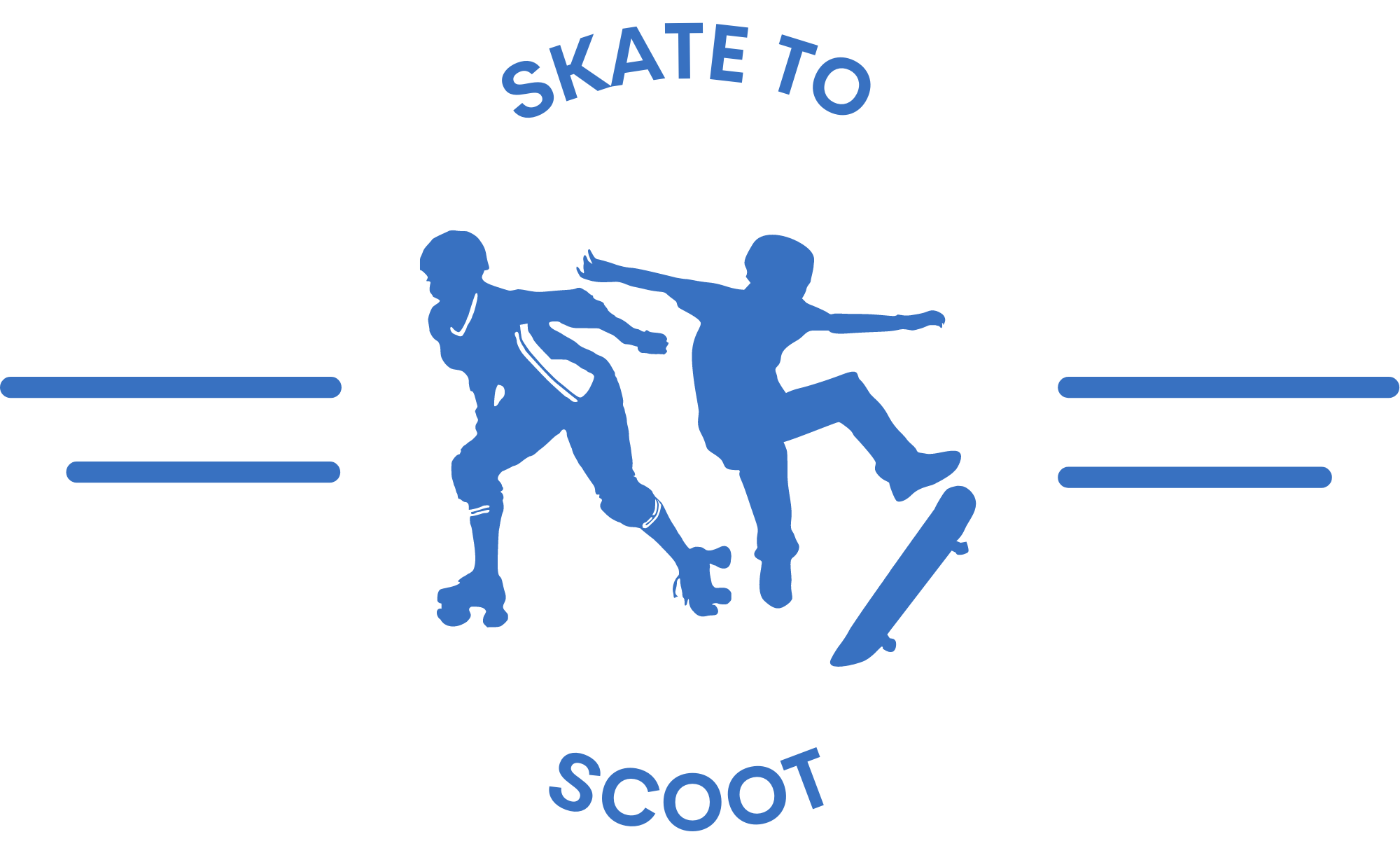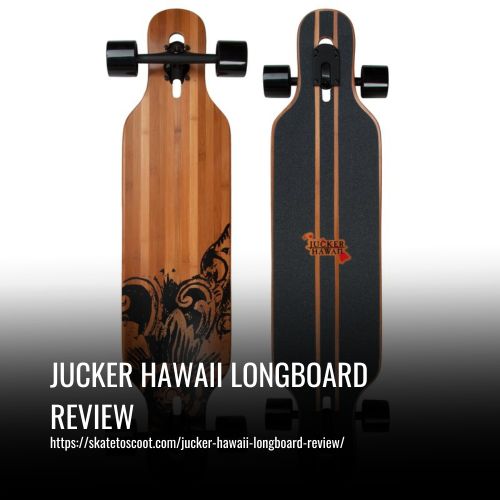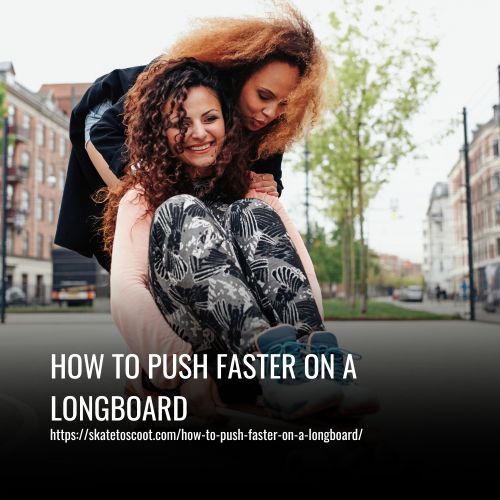As an Amazon Associate we earn from qualifying purchases.
Longboarding is generally considered easier to learn than skateboarding. Longboards are more stable and easier to use, making it easier for beginners to get the hang of it. However, longboarding still requires skills such as turning, pumping, balance, and strength, so it may still take some practice to become proficient.

What Factors Determine If Longboard Hard or Easy
Longboarding difficulty is influenced by various factors such as age, fitness level, rider weight, riding style, type of longboard, and riding environment.
1. Age
Longboarding can be enjoyed by people of all ages, with older riders finding it to be a relaxing and low-impact activity. Age is not a limiting factor, as long as the rider is in good physical condition and capable of handling the demands of the sport.
2. Fitness Level
Balance and joint mobility are crucial for longboarding, and overall fitness makes the sport easier for all riders. Engaging in other board sports or activities such as snowboarding, surfing, or biking can provide a head start in longboarding.
3. Rider Weight
Heavier riders need to consider board strength and stability, as well as the type of longboard that will best support their weight and riding style.
4. Riding Style
The difficulty of longboarding depends on the chosen riding style, with more technical styles such as freestyle and speedboarding requiring greater skill and practice.
5. Type of Longboard
The right board can make longboarding easier, with factors such as deck type, size, and wheel choice all affecting stability and maneuverability.
6. Riding Environment
The smoothness of the riding surface and the presence of obstacles greatly impact the difficulty of longboarding, making it easier to learn on even, open roads.
It’s important for individuals to consider these factors when starting their longboarding journey.
Longboarding Skills You’ll Need
To become proficient in longboarding, you need to acquire several basic skills. These include stepping on the board, maintaining balance while rolling, pushing with your foot, turning left and right, and foot braking.
1. Stepping on the Longboard
The initial skill involves finding your stance, determining which foot goes forward and which goes in the back. This step is relatively low in difficulty and can be practiced by adjusting your stance width or using a balance board to enhance balancing skills.
2. Maintaining Balance While Rolling
This skill is of medium difficulty and requires proper foot positioning, bent knees, and a lower center of gravity. It’s essential to experiment with different board types and sizes to find what suits your balance the best.
3. Pushing with Your Foot
Medium difficulty is associated with pushing, involving turning your front foot forward, maintaining a stable center of gravity, and bringing your rear foot back onto the board. Experimenting with different pushing techniques and board heights can help overcome this challenge.
4. Turning Left and Right
This skill is harder and requires good balancing, weight shifting, and pressing into the board’s edges with your toes or heels. Using a balance board can help improve your turning skills without risking accidents.
5. Foot Braking
Foot braking also poses a medium difficulty, involving dropping your back foot to create friction and slow down the board. Practicing on flat ground and at low speeds can help improve this skill.
Acquiring these longboarding skills may present varying levels of difficulty. It’s important to practice and experiment with different techniques and equipment to find what works best for you.
Can You Teach Yourself to Longboard?
Before you start learning tricks, there are some basics you need to know to get started. Here are a few key skills to focus on:
- How to Stand on Your Longboard: The popular choice is to place your front foot, your non-dominant foot, above the front axle with your toes facing forward or at a 45-degree angle. Your back foot, the dominant foot, will push off and come onto the board above the back axle.
- How to Stop: The easiest way to stop on a longboard is by dragging your dominant foot flat on the ground. However, it’s important to find the right balance to slow down without abruptly stopping, as this can cause injuries. Make sure to learn how to stop properly before going fast.
- How to Turn: Shifting your body weight in the direction you want to turn is key to executing a turn on a longboard. It’s important to learn how to shift your center of gravity just enough to turn and then reposition yourself back to the center of the board.
- How to Fall: Learning how to fall correctly is critical for your safety while longboarding. Practice spreading the impact of falling across your body and avoiding putting all the impact onto your joints or appendages. Avoid catching yourself with your hands or arms, as this can lead to wrist sprains or breaks.
Once you have mastered these basic skills, you’re ready to enjoy cruising on your longboard. Remember to always prioritize safety and wear protective gear such as a helmet and elbow pads. Happy longboarding!
The Biggest Problem With Teaching Yourself to Longboard
The biggest problem with teaching yourself to longboard is the potential lack of safety measures. While it is possible to learn longboarding on your own, it is crucial to address safety concerns.
Without someone else present, a serious fall could have severe consequences, possibly even leading to fatal injuries. It is advisable to skate in areas with bystanders around if you are longboarding alone to ensure that someone can assist you in case of an emergency.
Aside from safety, another drawback of self-teaching is the missed opportunity to share the experience with someone else. Longboarding can be more enjoyable when shared with a friend. Having a companion not only adds to the fun but also provides another perspective, allowing for quicker progress and identifying and resolving any issues that may arise.
Learn How to Practice Longboarding
Longboarding is a sport that requires practice and patience to improve your skills. Here are some tips on how to practice longboarding effectively:
1. Experiment: Ride your longboard on different surfaces and try different riding styles. This will help you gain more experience and improve your overall skills.
2. Turning: Practice turning on your longboard by applying pressure on one side of the board while leaning your body in the direction you want to turn. The board will follow your movements.
3. Turning Stance: To practice your turning stance, lean to the sides while shifting your body weight around. This will help you develop better control and stability while turning.
4. Push and Brake Stance: Work on your push and brake stance by balancing on one foot and using your other foot to push or brake. This will help you maintain control and speed while riding.
5. Carving: Carving is a technique that involves making consecutive turns on your longboard in an S-shaped pattern. This is a great way to slow down and improve your overall control.
6. Sliding: Sliding is a more advanced technique that involves carving hard and straightening your legs to lift some weight off the board. Practice sliding to improve your ability to slow down when needed.
7. Braking: Practice braking by finding a small slope and riding down it while using your shoes or gloved hands to drag against the ground. This will help you learn how to control your speed and come to a stop safely.
8. Maintaining Balance: The best way to improve your balance is to simply ride your longboard. Each time you ride, you will encounter different situations that will challenge your balance and help you improve your skills.
Remember to always wear protective gear, especially if you’re a beginner. This will minimize the risk of accidents and allow you to practice with confidence.
How Long Does It Take to Learn Longboarding
The time it takes to learn longboarding depends on several key factors. Previous boarding experience can result in a faster learning process, although adjustment time should still be anticipated. For beginners without any boarding experience, the learning curve is slightly longer.
Additionally, the time and effort invested in learning how to longboard greatly influence progress. Regular practice also plays a significant role in the speed of learning. Therefore, anyone can learn how to ride a longboard, but the amount of practice will determine the learning pace.
FAQs
Learning to longboard can vary depending on an individual’s previous experience with board sports. However, compared to skateboarding, many find longboarding to be more beginner-friendly due to its larger surface area, wider decks, and larger wheels. These factors provide a smoother and more stable ride, making it an excellent choice for beginners.
Turning on a longboard involves shifting your weight and adjusting your center of gravity. By leaning in the direction you want to go, you can initiate turns smoothly. It may take some practice to find your balance and learn the nuances of turning, but with time, you will develop the necessary skills.
Balance on a longboard is crucial for a comfortable ride. It is recommended to practice on flat surfaces initially before moving onto more challenging terrains. By keeping your knees slightly bent and placing your feet shoulder-width apart, you can maintain stability on your longboard.
Absolutely! Longboarding is an inclusive sport that welcomes individuals of all ages, genders, and skill levels. Whether you are a beginner or an experienced rider, there are various riding styles and disciplines to cater to your preferences.
Yes, longboards are better for beginners. They offer more stability, easier balance, and better maneuverability, making them ideal for learning how to ride. Additionally, longboards have strong shock absorption capabilities, making them safer for beginners. They are also designed for long-distance travel at high speeds, but it’s important to prioritize safety when riding long distances. Overall, longboards are a great choice for beginners to minimize risks and facilitate learning.
After getting your longboard, it’s important to prioritize your safety by getting protective gear. This will help prevent injuries while practicing, especially if you’re new to the sport. Once you have your board and gear, the first thing you should learn is how to make your board move and stop. To stop, you can use your foot as a brake by lightly brushing it against the ground until you come to a gentle stop.
To improve your longboard balance, you can try several exercises and activities. One option is to use a balance board, which not only improves balance but also strengthens various muscles in your body. Other exercises that can help improve balance include yoga, tai chi, leg swings, weight shifts, tightrope walking, one-legged squats, walking on uneven terrain, and standing from a chair without using your hands. Additionally, standing on one leg while lifting the other leg sideways or backward can also help improve your balance on a longboard.
The time it takes to get good at longboarding varies for each individual. Factors such as prior experience and determination play a role in how quickly someone improves. Those with a background in longboarding may progress faster than beginners. It can be helpful to ride with experienced longboarders who can provide guidance and tips. Ultimately, the more determined and dedicated you are to improving your skills, the faster you will progress in longboarding.
To longboard like a pro, you need to have discipline and practice regularly. Patience is also key because becoming a pro takes time. It’s important to be part of the longboarding community and learn from other experienced riders. Hang out at skate parks, join competitions, and immerse yourself in the world of longboarding. Don’t be afraid to step out of your comfort zone in order to improve.
Longboarding is similar to snowboarding in many ways. They both work similar muscle groups and use similar techniques. Snowboarding can even be described as longboarding on snow-covered hills. However, the main difference is that snowboarding uses bindings and requires riders to have their feet locked in, while longboarding does not have bindings and allows for a different stance.
Longboarding is similar to surfing in some ways. In fact, longboarding used to be called sidewalk surfing because it gave people a similar feeling to catching waves in the ocean. However, there are also many differences between the two sports. Surfing requires more skill and is more unpredictable since you have to interact with the waves. It’s hard to know where the wave will break and where to position yourself before catching it.
Before longboarding, it’s important to determine your riding goals and choose the right longboard for you. Keep in mind that longboarding comes with risks, so prioritize your safety at all times. Falling off the board is a common risk, and if you plan to travel long distances at high speeds, there is a higher risk of accidents. However, the danger of longboarding depends on how you approach and engage in the sport.
Conclusion:
Whether longboarding is easy or hard to learn ultimately depends on your mindset and determination. Like anything in life, it takes practice and patience to master. But once you get the hang of it, the freedom and exhilaration you’ll experience will make every stumble and scrape worth it.
So grab a board, strap on your helmet, and get ready to ride the waves of the pavement. Longboarding is a journey that’s as thrilling as it is rewarding.
Amazon and the Amazon logo are trademarks of Amazon.com, Inc, or its affiliates.



